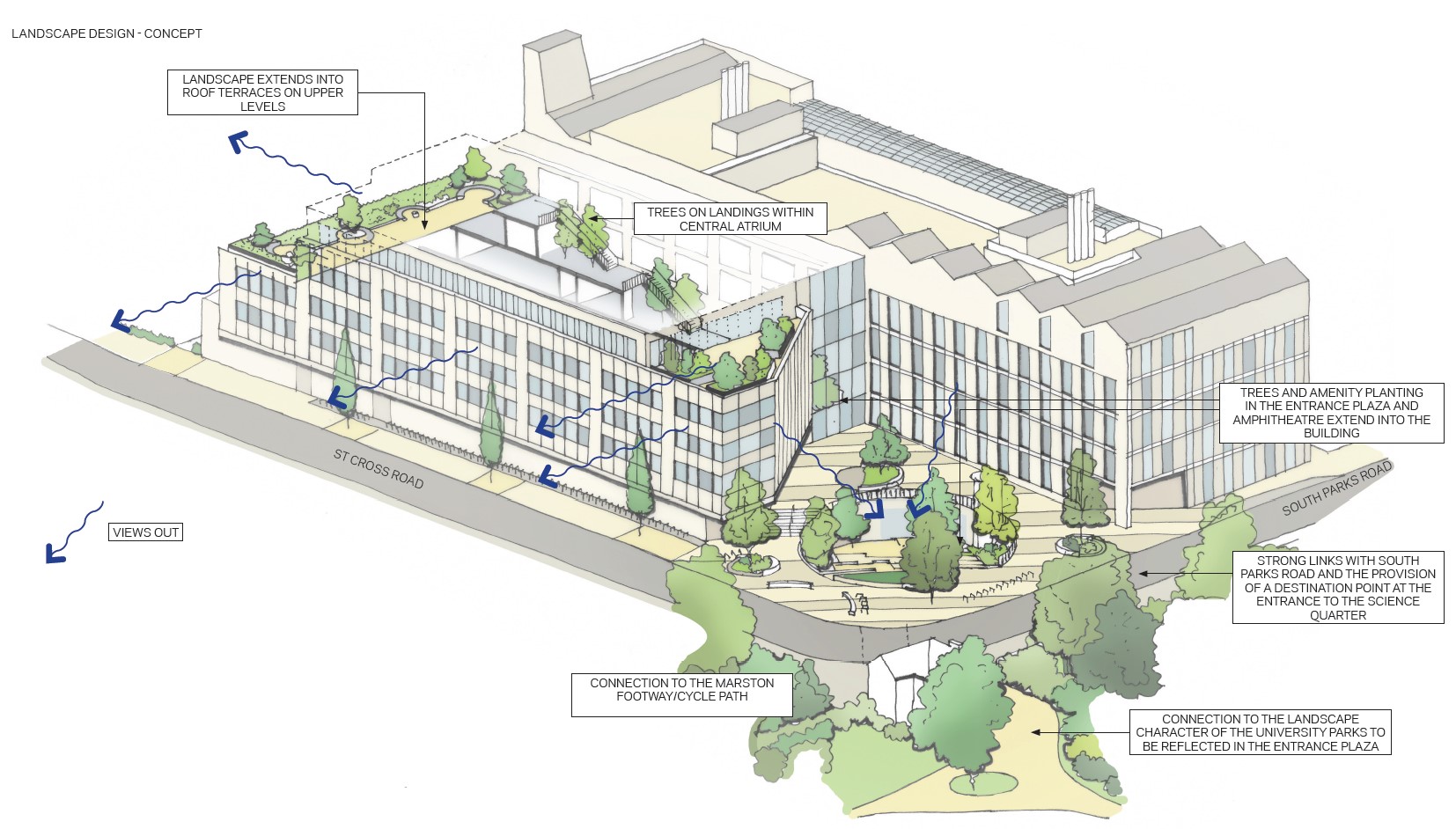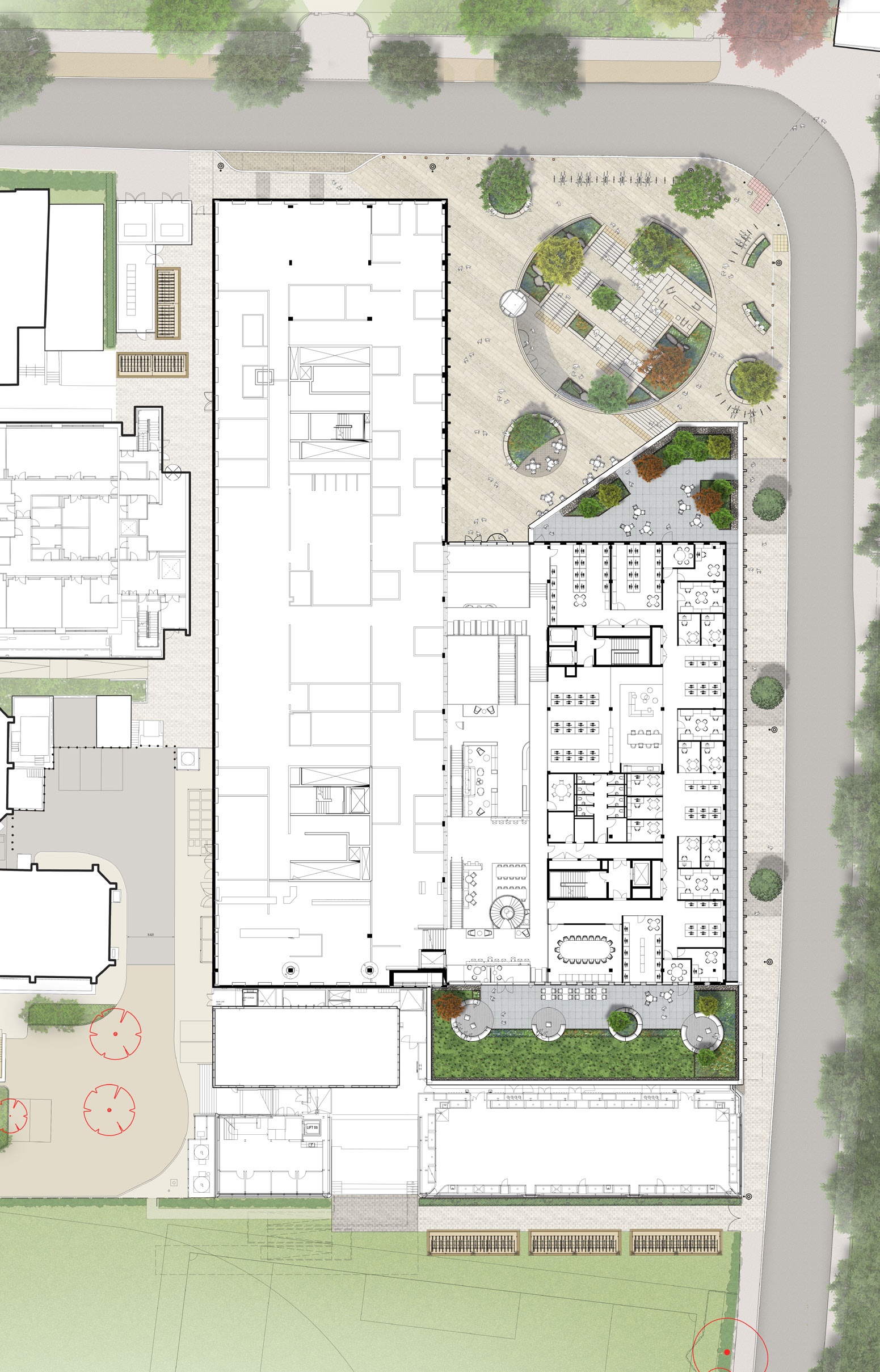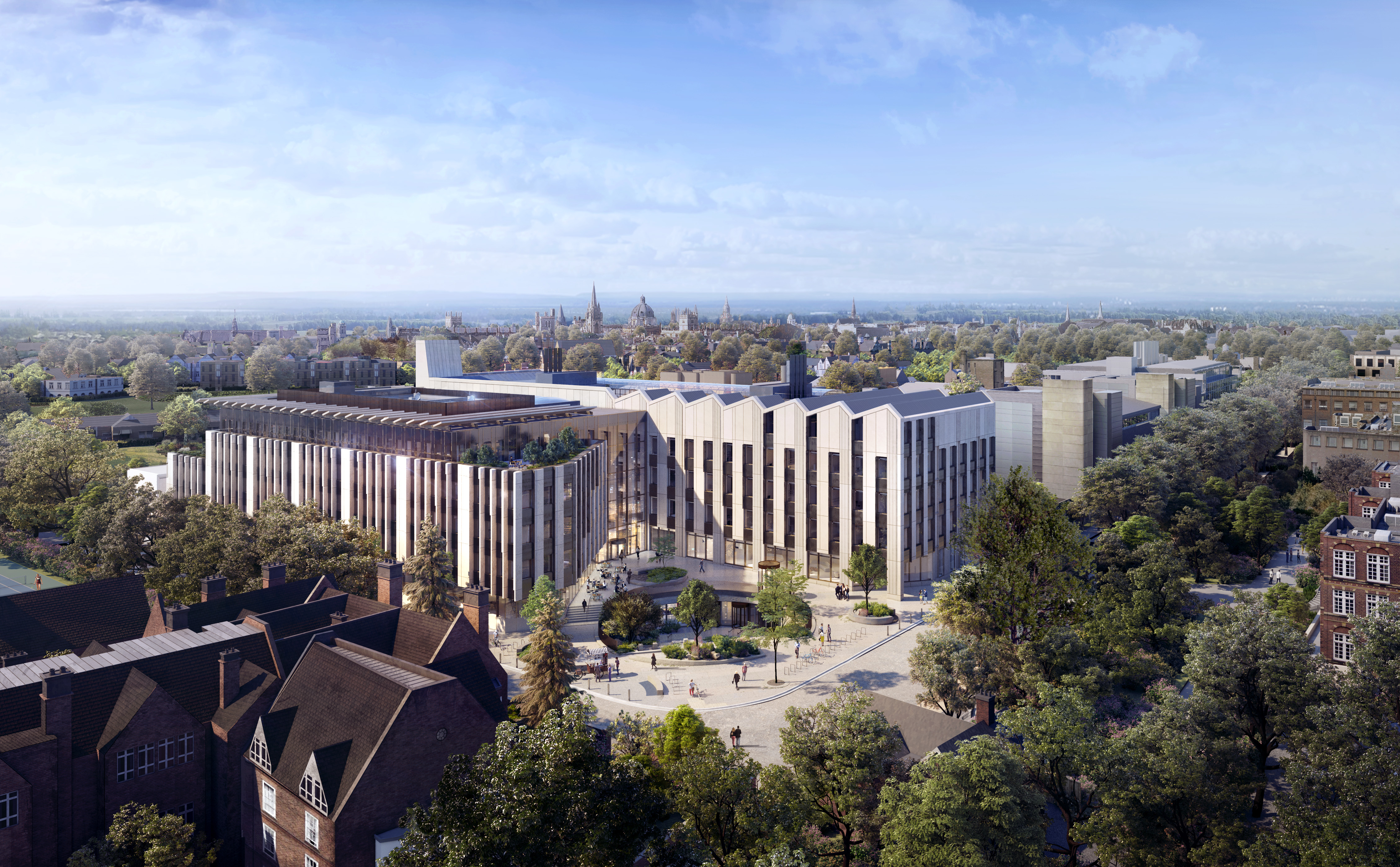Public Realm & Landscape
Key landscape principles for The Life and Mind Building include:
-
Providing a connection between people and nature.
-
Connecting the new building to University Parks, the Science Quarter and the wider city.
-
Providing a hierarchy of public, semi-private and private spaces, for academics and researchers, professional services and support staff, students and the public .
-
Providing multi-use spaces for collaboration and spaces that showcase the transformative work carried out in the building.

Isometric sketch illustrating the relationship between University parks and the development.
The design of the landscape has been developed in response to feedback and close coordination with the wider design team, stakeholders and Oxford City Council. Outlined below is a list of how the design has responded to the Oxford City Council Local Plan Design Checklist Appendix 6.1 Design of External Spaces
1. Are all spaces clearly defined and have a purpose? This should include well defined private and public open space, including a choice of open space.
The design provides a hierarchy of public, semi public and private spaces that include the streetscape, the entrance plaza, the amphitheatre space, café terrace, roof garden terraces and planting inside the building. All these spaces have a defined purpose, providing spaces for events, movement, contemplation and social interaction.
2. Are all external public spaces such as streets and parks overlooked by windows serving habitable rooms in buildings and adjacent activity?
All spaces are overlooked from multiple angles, views down into the entrance space have been carefully designed to connect the inside with the landscape and provide natural surveillance.
3. Has left over space and awkward corners been avoided?
As the scheme has been developed all awkward corners have been designed out to ensure that spaces flow and have purpose.
4. Does the landscaping provide opportunities for sensory richness?
Planting to the roof terraces and the entrance plaza provide an opportunity for a rich variety of colour, texture and scent. Trees have been selected in collaboration with the University Parks Department to extend the character of the park into the site.
5. What type of street furniture, floorscape materials, lighting and public art is proposed?
This report contains the proposed materials palette for the scheme. These materials have been selected to connect the Life and Mind Building to the Oxford University Science Quarter Masterplan which is currently in development for the northern side of South Parks Road, and the same materials, and street furniture approach is proposed. All these materials are robust, elegant and easy to maintain.
6. How is car parking integrated into the development so that it doesn’t have a negative impact on the experience of using outside spaces? How has the landscaping been used to help integrate parking into the street scene?
There is little parking on the site itself, and the requirements for parking have been integrated into the wider block plan, mindful of the changing policies of the City Council and the University.
7. Have Secure by Design principles been used?
Yes, the design team has worked closely with the Oxford University Security team to ensure strong passive supervision, develop a defensible landscape setting, using robust strong materials, which are easy to manage, and designing out areas that could be abused. The design is required to include security measures such as lighting and CCTV. This is sympathetically incorporated into the scheme.

Landscape Masterplan



